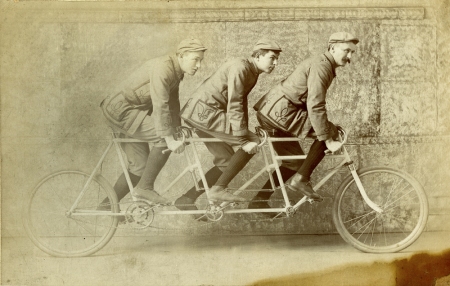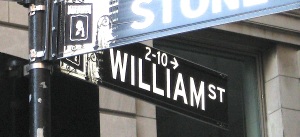In the 1890s, huge numbers of New Yorkers donned new riding suits, bought or rented a bike, and took part in the cycling craze—peddling along park paths or roads newly paved with smooth asphalt.

Leisurely rides were fine for the masses. But for hardcore wheelmen (and sometimes wheelwomen) looking for a real challenge, nothing beat the exhilaration of a new kind of competition: the century ride.
 A century ride clocked in at 100 miles. It wasn’t a race but a feat of personal endurance. Each rider had 14 hours to get from start to finish and prove their cycling prowess.
A century ride clocked in at 100 miles. It wasn’t a race but a feat of personal endurance. Each rider had 14 hours to get from start to finish and prove their cycling prowess.
“Bicycling clubs were formed all over the city,” reminisced future governor Al Smith in his 1929 autobiography, Up to Now.
 “You acquired full membership when you belonged to what was called the Century Club. That meant you had ridden 100 miles in a single day.”
“You acquired full membership when you belonged to what was called the Century Club. That meant you had ridden 100 miles in a single day.”
Every neighborhood had a club, among them the Kings County Wheelmen (known as “scorchers” for their speed), the Riverside Wheelmen (bottom photo, 1888), and the Williamsburgh Wheelmen (top photo, in 1896).
Century rides were popular with young, athletic men. “With a number of young men from my neighborhood, I left Oliver and Madison Streets at nine o’clock on Sunday morning and wheeled to Far Rockaway,” wrote Smith.
 “We went in swimming, had our dinner, and wheeled back.”
“We went in swimming, had our dinner, and wheeled back.”
Century rides often went round trip from Brooklyn to Eastern Long Island, as the ticket at the top right shows.
Another ticket from of an 1895 century ride lists each stop on the route from New York City to New Brunswick and back.
Century rides still take place today, and they sound like a lot of (very exerting) fun.
But their heyday remains the turn of the 20th century, when safer, more accessible bikes hit the market just as leisure time began to rise and a trend toward physical fitness gained popularity.

 And street pavements improved—thanks to the invention of asphalt, which was put down on an increasing number of city roads that were once paved with blocks, stones, even wood.
And street pavements improved—thanks to the invention of asphalt, which was put down on an increasing number of city roads that were once paved with blocks, stones, even wood.
The cycling craze wasn’t the only sports trend to hit New York in the 1890s. Baseball, tennis, boxing—find out more in Ephemeral New York’s upcoming book, The Gilded Age in New York, 1870-1910.
[Top photo: MCNY, unknown photographer, 1896, accession number 49.300.7; second image: MCNY, 1897, in the Collection on Sports, accession number 49.300.14; third image: MCNY, 1897, in the Collection on Sports, accession number 49.300.16; fourth photo: W.H. Anderson, New York State Century Club winner; fifth photo: MCNY, Riverside Wheelmen Bicycle Club, 1888, X2010.11.13347]

























